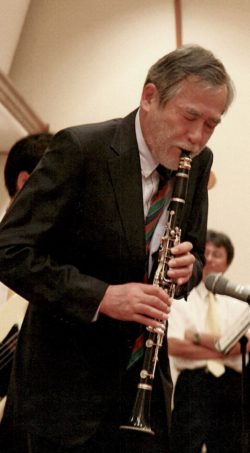Masaaki Kodama (1943-2020)

Education
Masaaki Kodama was born on September 7th, 1943 in Saitama Prefecture near Tokyo. He completed bachelor and master degrees in fisheries sciences at the University of Tokyo, and then was awarded a doctoral degree from the same university in 1973.
Professional career
1973 Associate Professor, 1985 Professor, 2002 Dean, School of Fisheries Sciences, Kitasato University; 2009 Emeritus Professor, Kitasato University; 2011 Specially-appointed professor, the University of Tokyo
Honors
1997 Science Achievement Award in Fisheries Sciences from the Japanese Society of Fisheries Sciences, 2010 Award of Merit from the Japanese Society of Fisheries Sciences
Key HAB contribution
Dr. Masaaki Kodama started HAB research in Ofunato Bay, Sanriku, Japan in the late 1970s where he monitored PSP toxins in field populations of Alexandrium tamarense and shellfish. Kodama’s detailed research opened new avenues to the physiology and chemistry of toxin production processes in dinoflagellates and diatoms, and to toxin accumulation and excretion in bivalves. Based on these studies, he found that PSP toxins are combined with nucleotides and are released by enzymes (ribonuclease RNase). He further developed modifications in toxin monitoring methods by introducing an ELISA assay method.
Dr. Kodama played a pioneering role in the development of HAB science in Western Pacific countries. His first international cooperation on HABs research took place in Thailand in 1984, a country where PSP cases had occurred the previous year. He organized a mission comprised of four Japanese researchers and collected samples in the innermost areas of the Gulf of Thailand. He confirmed the presence of PSP toxins in cultures of Alexandrium tamiyavanichii isolated by Ms. Suchana Wisessang (a pioneer on toxic dinoflagellate physiology in Thailand). The species was named by Dr. Enrique Balech after the name of another Thai scientist, Dr. Stichai Tamiyavanich who died from an accident during a toxic dinoflagellate sampling trip.
Dr. Kodama participated in various international HAB meetings, and especially in the 7th International Conference on Toxic Phytoplankton held in Sendai in 1995, where he or his co-workers presented seven papers on PSP, DSP, and ASP toxins in shellfish, and also a joint contribution, with local and international colleagues, about symbiosis of bacteria with toxic plankton. One evening, during that conference, he invited over 10 foreign participants to a bar for drinks and music. He had more than 30 different musical instruments, and often played them, even during conferences and sampling trips abroad. The photo shows Dr. Kodama playing the clarinet, one of his favorite instruments, at the party for the celebration of his retirement in May 2009.
After the Sendai Conference, he hosted a HAB training course in Kitasato University, with more than 30 invited scientists. His friendliness and easily understandable lectures attracted all participants. After the course, he participated as a resource person on toxin chemistry in more than 10 international training courses and almost 20 local seminars and workshops mostly organized in the tropical Asian countries. Among them he visited the Philippines quite often as a JICA (Japanese International Cooperation Agency) project member, because of the widely endemic PSP problems of the country. He joined the project to assist the establishment of PSP toxin monitoring system and joined seminars and training courses at various places organized by Mr. Cielito Gonzales of the Bureau of Fisheries and Aquatic Resources.
Domoic acid in bivalves was another of his research interests and a major issue at the time of his collaborative work in Vietnam. His collaborator there was Dr. Dao Viet Ha, the director of the Institute of Oceanography, and the last of Kodama’s PhD students. Outside Eastern Asia, he traveled to Central American countries (Guatemala and Puerto Rico) for PSP-related research.
After his retirement from university local and foreign researchers visited Dr. Kodama, and enjoyed discussion on various HAB topics, especially toxin producing bacteria and their contamination in organs of dinoflagellates, diatoms and animals such as puffer fish and horseshoe crab. He was eager to continue research on biosynthesis process of toxins by himself, and at the same time he expected that successors would reveal it sometime near future. Dr Masaaki Kodama passed away on August 30th, 2020 at the age of 76.
Mentored
Kenji Kobayashi, Yoshinobu Takata, Katsuji Sekiguchi, Setsuko Sakamoto, Ulysess M. Montojo, Dao Viet Ha.
Key HAB publications
Takata, Y., Sato, S., Dao V. H., Montojo, U. M., Lirdwitayaprasit, T., Kamolsiripichaiporn, S., Kotaki, Y., Fukuyo, Y., Kodama M. 2009 Occurrence of domoic acid in tropical bivalves. Fish. Sci., 75, 473-480.
Kobayashi, K., Takata, Y., Kodama M. 2009 Direct contact between Pseudo-nitzschia multiseries and bacteria is necessary for the diatom to produce a high level of domoic acid. Fish. Sci., 75, 771-776.
Montojo, U. M., Sakamoto, S., Cayme, M. F., Gatdula, N. C., Furio, E.F., Relox, J.R., Sato, S., Fukuyo, Y., Kodama, M. 2006 Remarkable difference in accumulation of paralytic shellfish poisoning toxins among bivalve species exposed to Pyrodinium bahamense var. compressum bloom in Masinloc bay, Philippines. Toxicon, 48, 85-92.
Sekiguchi, K., Sato, S., Ogata, T., Kaga, S., Kodama, M. 2001 Accumulation and depuration kinetics of paralytic shellfish toxins in the scallop Patinopecten yessoensis fed Alexandrium tamarense. Mar. Ecol. Prog. Ser.,220, 213-218.
Sato, S., Sakai, R., Kodama M. 2000 Identification of thioether intermediates in the reductive transformation of gonyautoxins into saxitoxins by thiols. Bioorg. Med. Chem. Lett., 10, 1787-1789.
Sakamoto, S., Sato, S., Ogata, T., Kodama M. 2000 Formation of intermediate conjugates in the reductive transformation of gonyautoxins to saxitoxins by thiol compounds. Fish. Sci., 66, 136-141.
Kodama, M., Ogata, T., Fukuyo, Y., Ishimaru, T., Wisessang, S., Saitanu, K., Panichyakarn, V., Piyakarnchana, T. 1988 Protogonyaulax cohorticula, a toxic dinoflagellate found in the Gulf of Thailand. Toxicon, 26, 707-712.
Kodama, M., Ogata, T., Sato, S. 1988 Bacterial production of saxitoxin. Agric. Biol. Chem., 52, 1075-1077.
Kodama, M. 1983 High molecular precursor of paralytic poisons. Toxicon, 21 (Suppl., 3), 233-236.
Ogata, T., Kodama, M., Fukuyo, Y., Inoue, T., Kamiya, H., Matsuura, F., Sekiguchi, K., Watanabe, S. 1982 The occurrence of Protogonyaulax spp. in Ofunato Bay, in assocation with the toxification of the scallop Patinopectein yessoensis. Bull. Japan. Soc. Sci. Fish., 48, 563-566
---
Recording of Dr. Kodama playing the clarinet:

